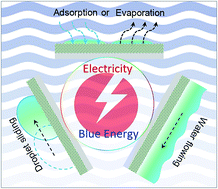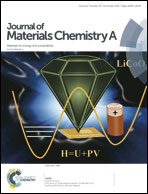Blue energy harvesting on nanostructured carbon materials
Abstract
The generation of electric power from the relative movement of liquid and solid media is an attractive renewable energy strategy. From the interaction of water with nanostructured carbon substrates, low-power electricity has been observed on carbon nanotubes, carbon black film, graphene and their derivatives. Devices for harvesting electric power have diverse working principles in the literature, even though only electrons, water molecules and/or ions are involved in energy conversion. Therefore, a complete understanding of the energy conversion mechanism is critical for the future design of novel devices. In this report, we focus on the concept of harvesting energy from water–carbon interfaces and summarize the materials, structural design and electricity harvesting mechanism of devices. Three promising mechanisms of nanogenerators, namely, sliding droplets, flowing water and phase change processes, are discussed as responses to external stimuli. Moreover, their physical characteristics are analyzed in depth to understand the state of the art in device design. We envisage that a better understanding of carbon-enabled devices would inspire the design of highly efficient miniaturized power systems for the water-energy nexus.

- This article is part of the themed collection: Recent Review Articles


 Please wait while we load your content...
Please wait while we load your content...